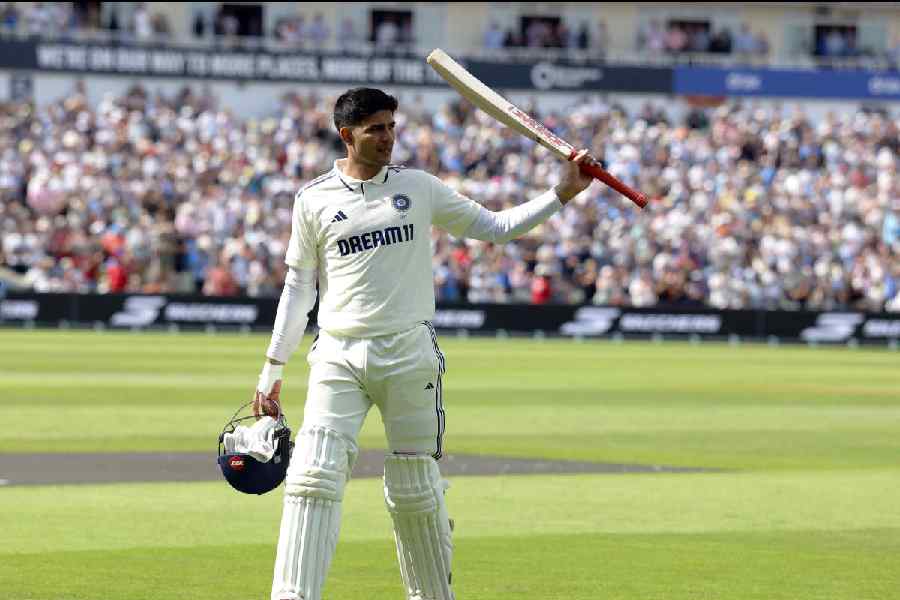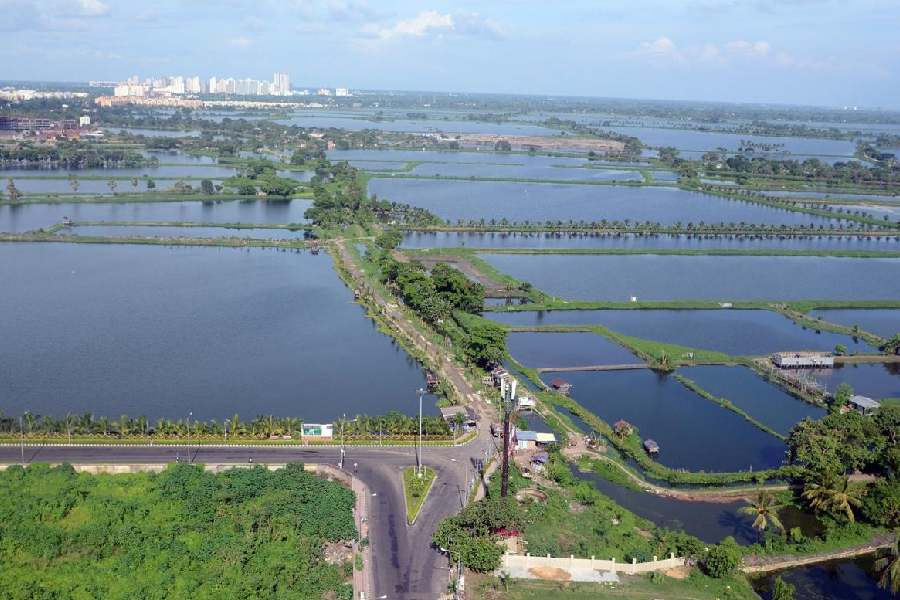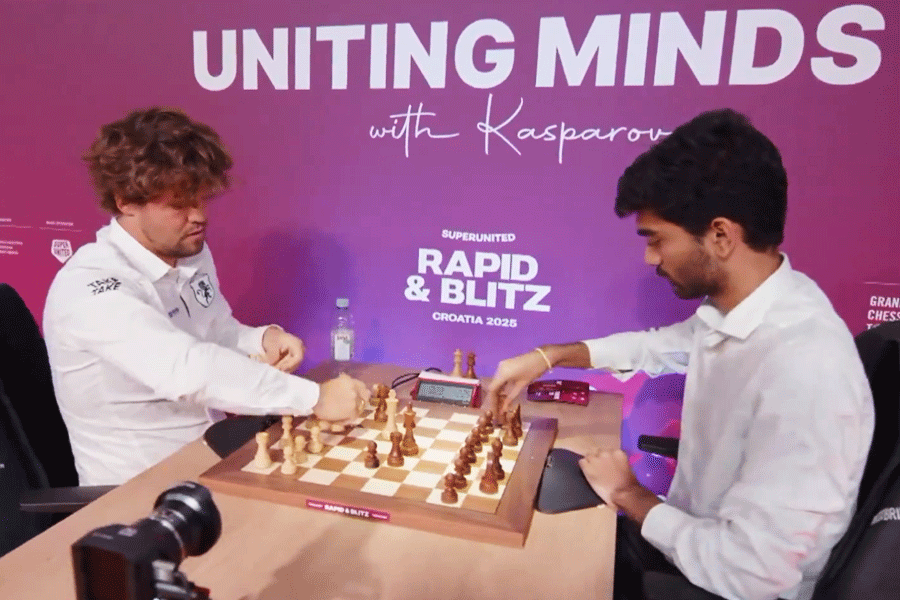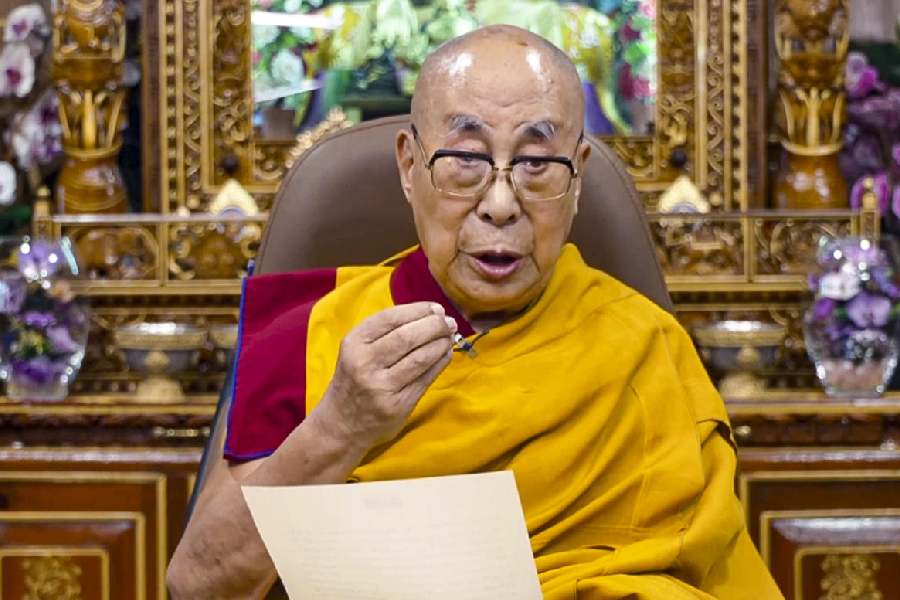|
|
If there is one Indian composer whose songs respond wonderfully to Western instruments, it ought to be Rabindranath Tagore. This is probably stating the obvious, since the Western influence on Tagore’s music is well known — he thought European music expressed “the variegated nature of human life by translating it into tune”. The idea behind Tagore Symphony, presented by the Bangalore-based Roshik Sabha and Ranjon Ghosal at the Science City auditorium on November 17, was thus a splendid one.
When over threescores of violinists, cello- and double bass-players, guitarists, pianists, percussionists and players of brass instruments like the trumpet, trombone, tuba and euphonium — culled from Calcutta’s La Martiniere School and L’Atelier de Musique, and the Bangalore School of Music and Frank Anthony Public School, Bangalore — played the first bars, the effect was truly grand. There should be no doubt about the fact that the musicians, trained for months by Abraham Mazumdar, were the stars of the show, which boasted some of the biggest names in Rabindrasangeet today. Mazumdar also composed the 2,250-page score.
Of the 23 songs in the programme, only three were choral — Byartho praaner abarjana, O amar desher mati and Sankochero biuvalata. Which was all very well since the differences in pitch and timing among the singers were made more obvious by the perfect coordination and harmony of the orchestra. Six were duets — Keno cheye achho go ma (by Lopamudra Mitra and Srabani Sen), Ami marer sagar paari debo (Manoj and Manisha Murali Nair), Amar mukti aloy aloy and Hingshay unmatto pritthi (Mohan Singh Khangura and Indira Bandyopadhyay), Kharabayu boye begey and Bidhir bandhon katbe tumi (Tomojit Ray and Sromona Chakraborty). The pairing of Mohan Singh and Indira Bandyopadhyay worked the best, particularly with Subrata Mukhopadhyay’s piano in Hingshay unmatto.
Tomojit and Sromona seriously botched up the antara of Kharabayu, and never recovered from the mistake. Manisha Murali Nair, whose falsetto was suitable for Amar praaner pore chole gelo ke, tripped on the lyrics even with a printed sheet in front of her. All the singers proudly held or mounted their lyric sheets — something that is fast becoming a Rabindrik norm.
Indira Bandyopadhyay’s Je raatey mor duwarguli bhanglo jhorey was by far the most rivetting performance of the evening, owing also to Abraham Mazumdar’s piano. A proof of Mazumdar’s genius was the very different treatment of this song from Jetey jetey ekla pothey (sung by Mohan Singh), both dwelling on the theme of the storm. Mohan Singh’s Akash bhora shurjo tara marked another high point of the programme. Chandrabali Rudra Dutta’s E monihar amay nahi shaje and Lopamudra Mitra’s Phool boley dhanyo ami matir porey matched well with the music, but the same cannot be said of Saheb Chattopadhyay’s Jodi tor dak shune keu na ashe or Manoj Murali Nair’s Pinakete lagey tankar.
The use of Gregorian chant for Phool bole, Wagnerian sforzando for Sharbo kharbotare dahe, baroque-jazz combination in Pinakete and the progression from strings to arpeggiated chords in Ami marer sagar paari debo ought to give Rabindrasangeet singers and music arrangers much food for thought.











